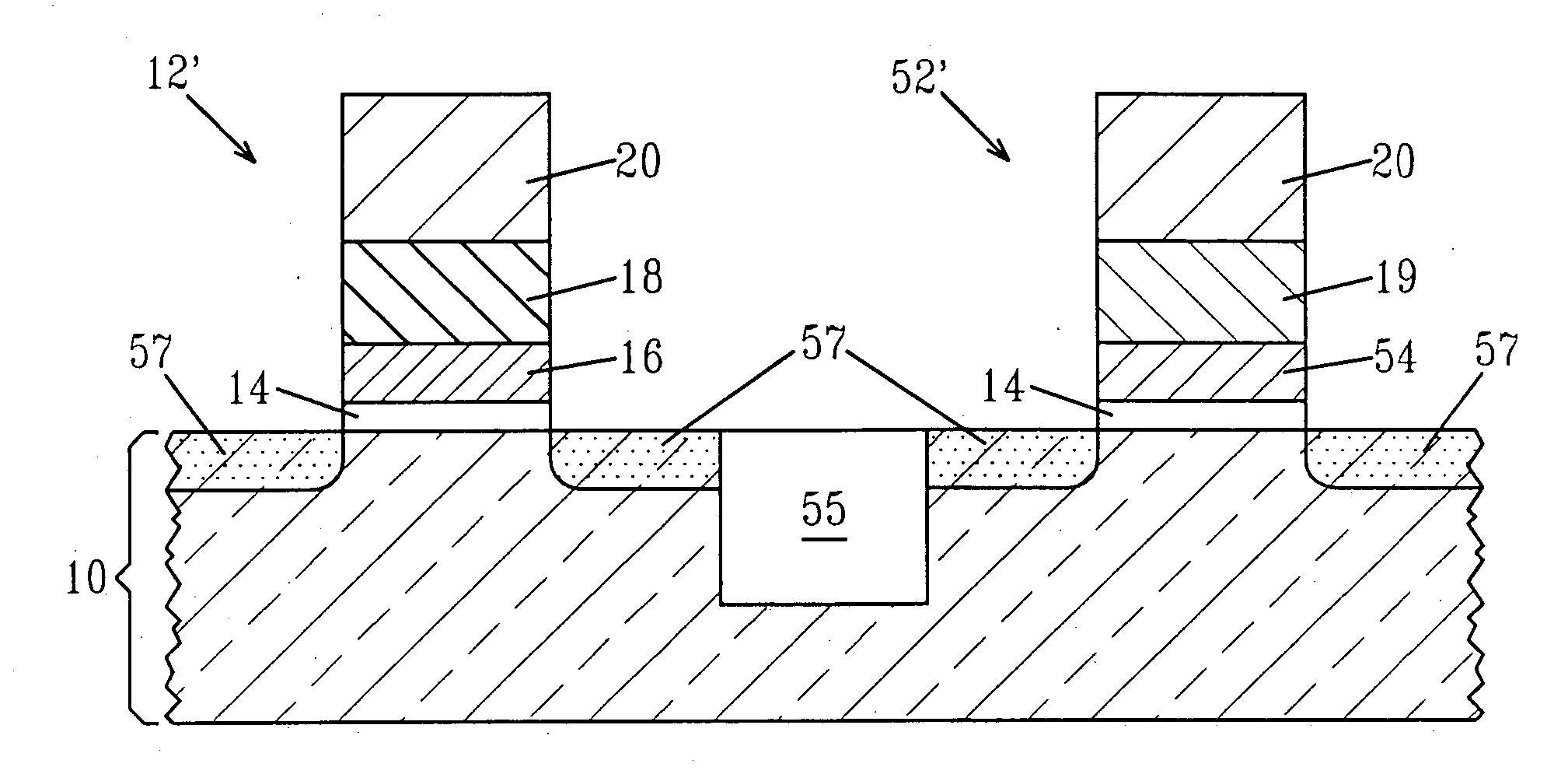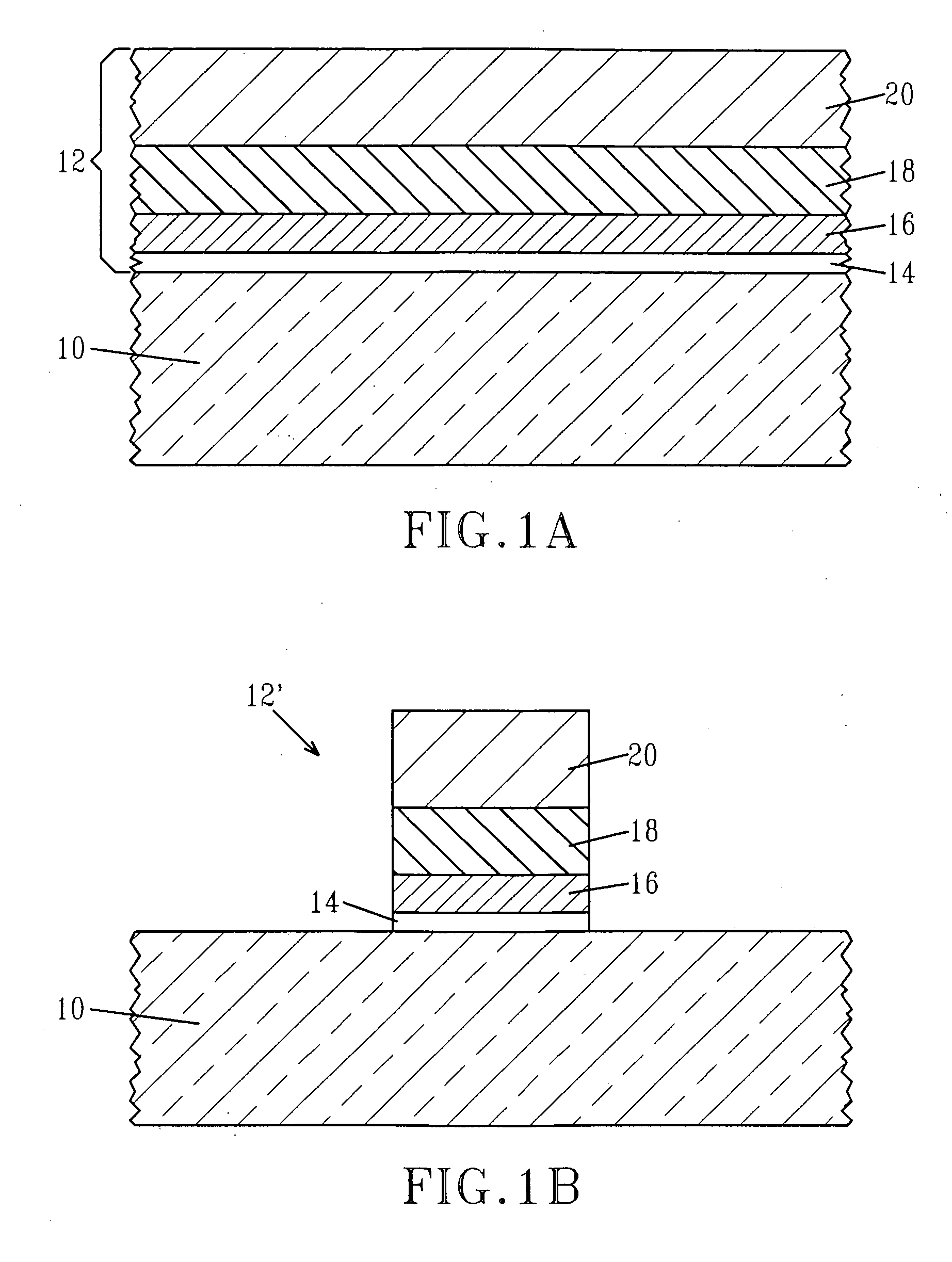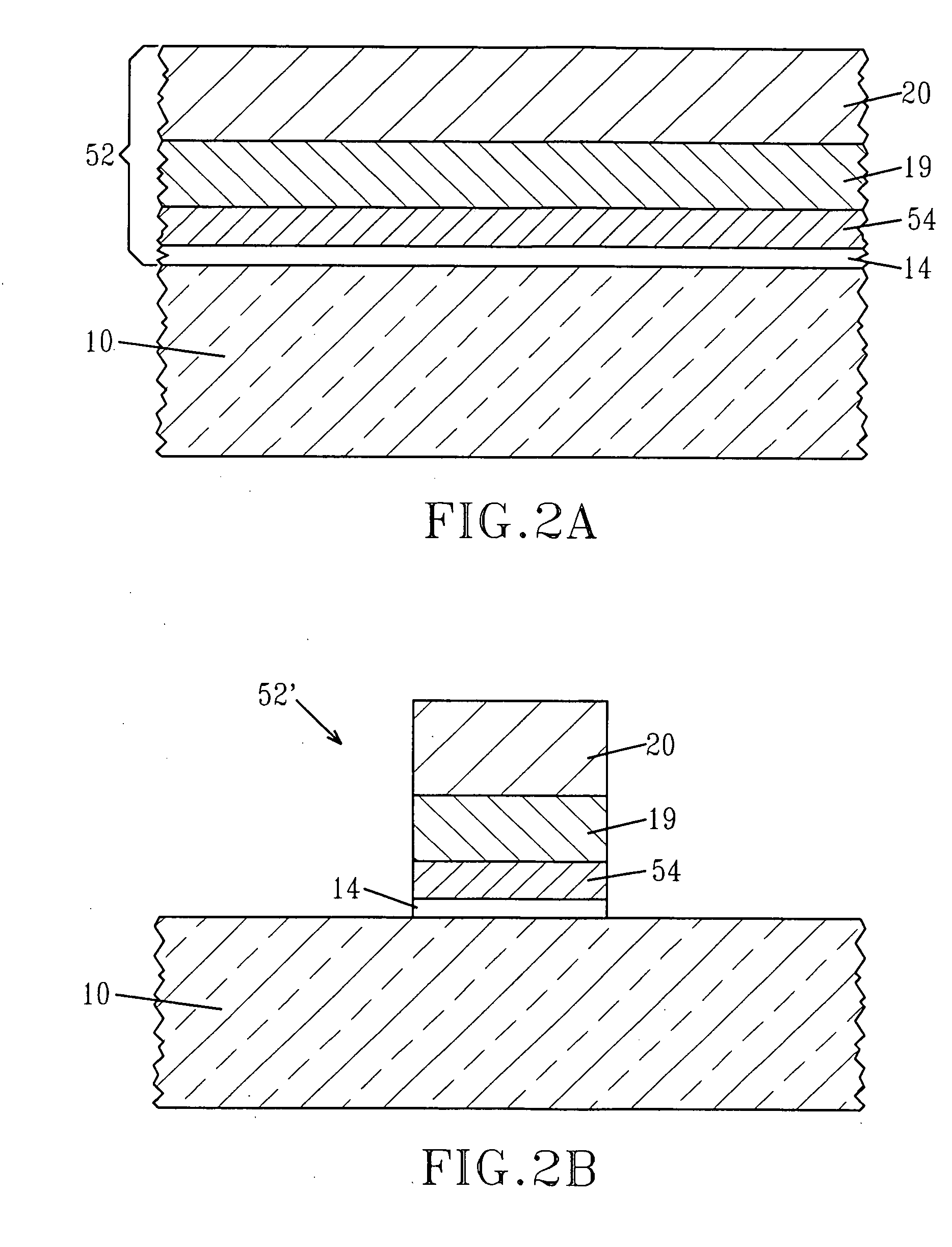Using metal/metal nitride bilayers as gate electrodes in self-aligned aggressively scaled CMOS devices
a technology of metal/metal nitride bilayers and gate electrodes, which is applied in the direction of semiconductors, electrical devices, transistors, etc., can solve the problems of reducing the strength of the electric field at the surface, affecting the performance of the transistor, and the performance of the polysilicon gate may suffer device performance degradation, etc., to achieve high workfunction
- Summary
- Abstract
- Description
- Claims
- Application Information
AI Technical Summary
Benefits of technology
Problems solved by technology
Method used
Image
Examples
example
[0074] In the sole example of the present application, an nFET comprising Si / SiO2 / HfO2 / Ti / TiN / PolySi was prepared utilizing the basic processing steps described in the detailed description portion of the present invention. In this example, the deposition of the TiN capping layer was clustered to the deposition of the Ti (low workfunction elemental metal). Two gate stacks that were representative of the present invention were prepared; one including 10 Å Ti and 150 Å TiN, and the other including 20 Å Ti and 150 Å TiN. For comparison, an nMOS including TiN and an nMOS comprising polySi and SiON were also prepared.
[0075] Table 1 illustrates the effectiveness of the inventive nMOS structure after self-aligned MOSFET fabrication. The threshold voltage, Vt, the shift from mid-gap (towards nFET) and the inversion thickness, Tinv, are shown. The Vt and Tinv were measured using conventional techniques well known in the art. For example, the Vt was determined by calculating the current using...
PUM
 Login to View More
Login to View More Abstract
Description
Claims
Application Information
 Login to View More
Login to View More - R&D
- Intellectual Property
- Life Sciences
- Materials
- Tech Scout
- Unparalleled Data Quality
- Higher Quality Content
- 60% Fewer Hallucinations
Browse by: Latest US Patents, China's latest patents, Technical Efficacy Thesaurus, Application Domain, Technology Topic, Popular Technical Reports.
© 2025 PatSnap. All rights reserved.Legal|Privacy policy|Modern Slavery Act Transparency Statement|Sitemap|About US| Contact US: help@patsnap.com



